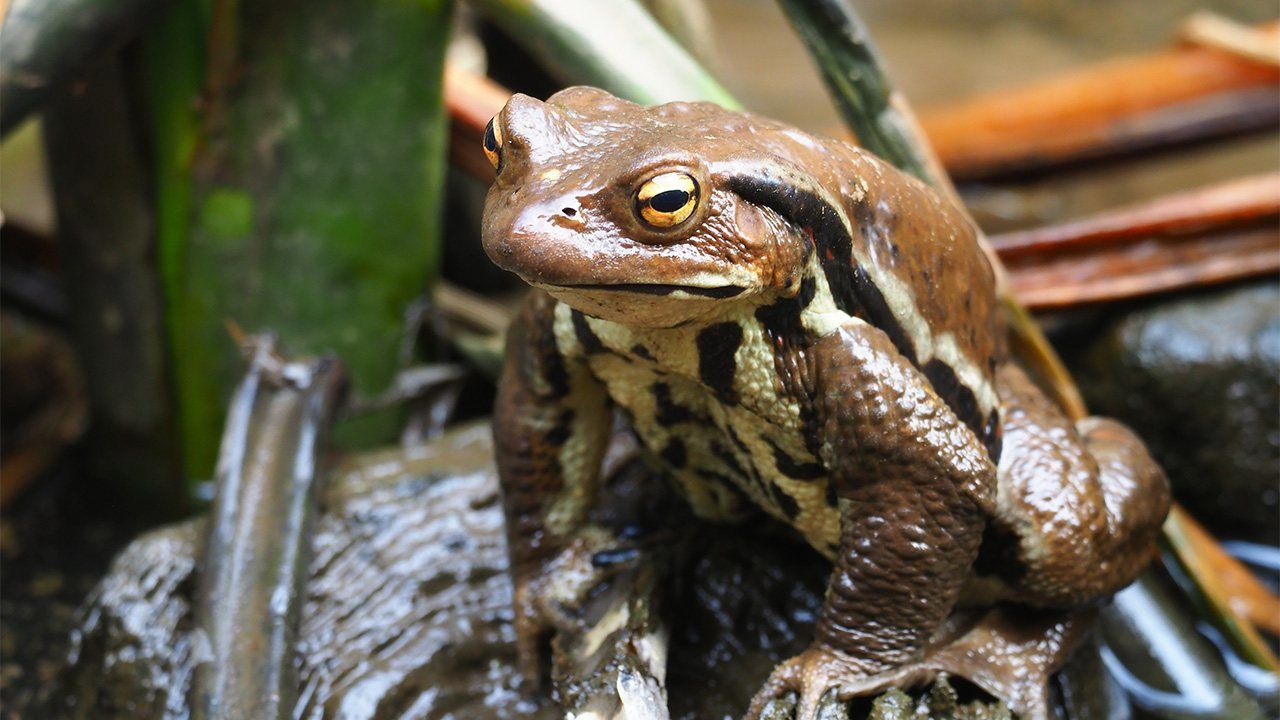
A Journey Through Japanese Haiku
The Thinking Toad
Culture Environment Lifestyle- English
- 日本語
- 简体字
- 繁體字
- Français
- Español
- العربية
- Русский
おもふ事だまつて居るか蟇 曲水
Omou koto / damatteiru ka / hikigaeru
Are you keeping
your thoughts silent,
toad?(Poem by Kyokusui, written in 1690.)
Japanese common toads (hikigaeru) are dark in color with large and small warts on their backs. They are typically around 10 centimeters in length when fully grown, live in grass or under the floors of houses, and move rapidly on four legs without jumping. The females are larger than the males, who call out with quiet, low cries.
In haiku, frogs have long been considered a kigo or season word for spring, but the poet Kyokusui uses the toad here as a summer season word. The creatures are associated with supernatural yōkai, as seen in characters called Jiraiya in kabuki and the manga Naruto, who apply magic learned from toads. Such uncanny natures make them suitable for use in haiku.
One might read the haiku as simply asking the toad whether it is keeping silent about what it is thinking. However, the poet seems to view the toad as a Buddhist priest undergoing ascetic training, rather than as a yōkai. During such training, there are intervals of silent practice, and the toad apparently looks like a priest in such moments.
Kyokusui was one of Matsuo Bashō’s trusted disciples, and a high-ranking samurai. In 1717, while in his late fifties, he killed a political enemy before immediately committing seppuku. Some interpreters have suggested a connection between that event and this haiku, but given the time it was composed, it seems unlikely.
(Originally published in Japanese. Banner photo © Pixta.)